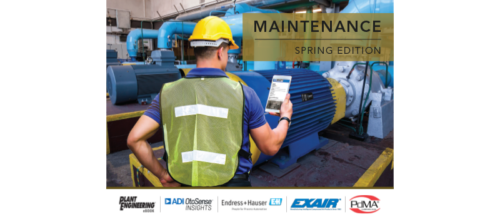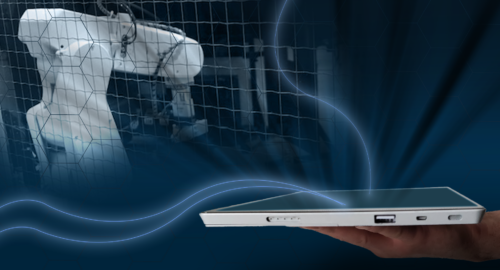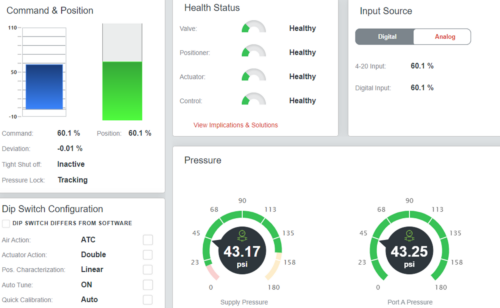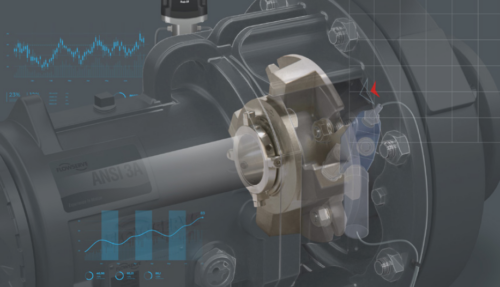The heart of engagement
Sur-Seal rebuilt its culture, one Lego block at a time
The irony, of course, is that Sur-Seal makes gaskets, which are designed to provide a seal between two objects to make everything flow smoothly. They are designed to deliver an airtight environment so that the machine can do its job. They are designed to create a bond.
The irony is that no more than a dozen years ago on the outskirts of Cincinnati, Sur-Seal made gaskets. There was no bonding in that manufacturing process. There was a decided top-down management structure that left employees out of the loop and disheartened. Sur-Seal made gaskets. That’s it.
Steve Rothweiler remembers how it was. "Management wasn’t actually involved. It was not an open plant," the 22-year Sur-Seal veteran said. "We didn’t get enough support to empower the people. It was tough."
Ivan Rodriguez remembers how it was. He has been at the company for 13 years. "You could really feel that no one was leading," he said.
Alexis Curtis remembers how it was. A 22-year employee at Sur-Seal, she loves her job. "I always liked it from the beginning. I always thought I was doing something important," she said, but also said more was possible. "Management was in the way for us to do the good things we wanted to do."
More than anyone at the company, Mick Wilz remembers how it was. He’s the director of enterprise excellence at Sur-Seal, but that wasn’t his title a dozen years ago when he and his brothers, the second-generation owners of the business, took over the business their father began in the 1960s. He was just the guy in charge of the company. His assessment of the family business was specific, blunt, and unsparing.
"In 2002, I looked over my shoulder and there was nobody following me," Wilz said. "At home, I was living a created life, and here I was living an inherited life. Our values were not in line."
It was at this time Wilz decided things needed to change. It was not just something you could find in a book, even though Wilz found a book called "Engagement Is Not Enough" by Keith Ayers. It was not just about helping employees to feel part of something larger than just their job, though the company now provides life coaches as well as human resources. It was not about making more gaskets or better gaskets or expanding the business, although all of those things have happened in the dozen years since things changed.
"Working on employee engagement is what took us over the edge," Wilz said. "When you say ‘you have an engaged team,’ how do you measure it? I don’t believe you can measure it. Engagement has to come from the heart."
Fundamental change
Mick Wilz had tried to make changes before, back in the 1990s, but the change didn’t come from the heart. "When I was leading back in the 1990s, what I found out is that people aren’t afraid of change; they are afraid of uncertainty," he said. "They weren’t afraid of change; they were afraid of where I was leading them."
"In the beginning, he tried and it didn’t work, because he didn’t delegate a group of people to sustain it," Rothweiler said. "All it was to increase production and increase throughput. He forgot the people. There was a dollar value attached. He didn’t bring the people with it."
Things started to change with a book club. Wilz and members of his team began by reading the book, chapter by chapter, and discussing the changes involved. But Rodriguez and others saw the change in leadership as well. "He started changing. He was different," Rodriguez said.
"My brothers and I made ourselves accountable to our employees," Wilz said. "We removed their uncertainty by making them insiders. We told them the good news and the bad news. Now everybody sees all the good stuff and all the bad stuff."
As the culture change took hold, so did growth for the business. So in 2006, Wilz began planning for reorganizing the plant floor. He used a tool well-known for engagement, cooperation, and building. Literally building.
Legos.
It’s still in their plant, that Legos display that solidified Sur-Seal’s reputation as a change agent. It’d been widely written about in local and national press; how Wilz began mapping out the rearranged plant floor to improve product flow and drive the Lean manufacturing changes he wanted to institute. There’s a Lego man standing by the stamping press for the gaskets. There’s a Lego woman standing by another workstation. Green Legos mark the path for what the company calls Main Street, which is where product is fed along the Lean production process.
Initially, employees questioned the sanity of bringing children’s building blocks into a manufacturing plant to demonstrate how the new plant might look. Then people started playing with the blocks, moving them around to offer their own views on how the plant’s manufacturing process might be optimized. And thus there was engagement.
Building a chain
Mick Wilz holds a chain in the palm of his hand. It’s one of his favorite props. He notes the scrambled links, how all the links are jumbled together. He takes the hoop at the end of the rings and the chain unravels as he raises it, the links rising to form a straight line, with a small weight at the end.
"My brothers and I straightened out one link of the chain at a time," he said. "It was built on a foundation of trust, and at top are values of the organization and the family.
"After we got it all in line, our people now run the business. Our job as owners is to keep the chain straight," he said. "If the chain gets a little out of whack, our job is just to go back in and straightened out. But if you push it, the chain gets jumbled up again. Leadership just keeps the chain straight."
And the employees now keep things straight. "When we have an engaged team, what we have is a facility where we have all tools in place to handle differences in employees," Wilz added. "Everybody’s different, so we have coaching programs in place to solve issues quickly."
They also have 4% of their workforce devoted to change management, which are the roles Rothweiler, Rodriguez, and Curtis hold within Sur-Seal. "They are dedicated to continuous improvement," Wilz said. "These are the people making the changes. I’m not going out and driving the change."
How things have changed
There are many stories that could illustrate how Sur-Seal has changed, both in form and in function. You could point to the company’s performance success, both financial and productive, and that has been impressive. You could note its expanded product lines, including a clean room to take on a new move into the medical supply business. That three-year process required moving around a lot of Legos, but the result was a 20,000-sq-ft clean room that will help Sur-Seal open a new line of business.
There are a series of bins to hold materials and supplies for the employees. They come and take what they need when they need it. There is an inventory management process, but employees get supplies as they need them. Sur-Seal operates on the honor system.
There are the lockers near the employee workstations, so workers can keep their personal belongings close at hand, and the different color schemes for each work cell, including one area done in pink with lacy curtains. Even in a structured business, there is room for the individual, and room to express yourself.
But there is one story that best sums up how far Sur-Seal has come since 2002, since Mick Wilz changed the way management and employees relate to one another. It was the middle of the 2008 recession, and things were getting tight everywhere.
As auto sales slipped and part of Sur-Seal’s core business fell away, the company was faced with a tough choice-layoffs or pay cuts.
Company employees took a 4% pay cut and reduced their schedules to 36 hours a week. The business fought its way through the tough days in 2008 and 2009 and emerged better than ever.
Would that have been possible in 2002, before the Legos and the books and the change in the ways employees were engaged at Sur-Seal? Rothweiler smiles, a little ruefully. "No way," he said simply.
The change in employee engagement was about untangling the chain, but it meant so much more to the people Mick Wilz now entrusts with his family business. "It was like a spiritual awakening," Rothweiler said. "You could see there was a sincere thought behind everything he brought up. This time, he let go of control."
And Wilz and his team gained so much in that process. "We’ve been living the life of continuous improvement," he said. "This is now a place where you can grow, where you can learn things. You have to find a seat on the bus for everyone. By leading them and coaching them, you spread the reward out."
CFE Media will sponsor the 2014 Global Automation and Manufacturing Summit on Sept. 10 starting at 8:15 a.m. in Room W190 in the West Wing of McCormick Place.
Click here to register for the summit or for IANA.
To learn more about IMTS, the IMTS 2014 Conference, and to register, visit IMTS.com. Conversations within the IMTS community are going on at:
Twitter: https://twitter.com/IMTS_2014 or @IMTS_2014
LinkedIn: https://www.linkedin.com/groups/IMTS-2014
Facebook: https://www.facebook.com/IMTS.show
Do you have experience and expertise with the topics mentioned in this content? You should consider contributing to our CFE Media editorial team and getting the recognition you and your company deserve. Click here to start this process.





